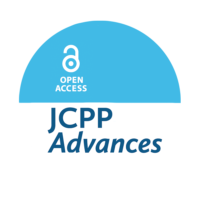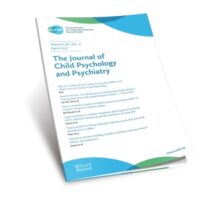Some highlights from our three journals JCPP, CAMH, and JCPP Advances. Each one of the posts below provides a link to read, and download the full paper.
Feature Papers
-

Network analysis of ecological momentary assessment identifies frustration as a central node in irritability
Paper from the JCPP – ‘Using a novel network analytic approach with smartphone-based ecological momentary assessment (EMA), we examined how irritability and other anxiety and mood symptoms were connected.’ Wan-Ling Tseng (pic) et al.
Read more -

Secondary data analysis of social care records to examine the provision of mental health support for young people in care
Open Access paper from JCPP Advances – ‘Using routinely collected social care data, we explored the provision of mental health support for 112 young people in care in the UK.’ Alice R. Phillips (pic) et al.
Read more -

Clinical Review: Sleep disturbance as transdiagnostic mediator between adverse childhood experiences and psychopathology in children and adolescents: A structural equation modeling meta-analysis
Open Access paper from JCPP Advances – ‘The present study used a novel two-stage meta-analytic structural equation model to investigate whether ACEs predict psychopathology through sleep disturbance’. Jianlin Liu et al.
Read more -

Melatonin use and the risk of self-harm and unintentional injuries in youths with and without psychiatric disorders
Open Access paper from the JCPP – ‘This study investigated whether melatonin, which is the most common medication for sleep disturbances in youth in Sweden, is associated with a decreased risk of injury. Analyses were stratified by sex, injury type, psychiatric comorbidities and age at melatonin-treatment initiation’. Marica Leone (pic) et al.
Read more -

Research Review: Autonomic dysregulation and self-injurious thoughts and behaviours in children and young people: A systematic review and meta-analysis
Open Access paper from JCPP Advances – ‘Self-injurious thoughts and behaviours (SITBs) have been associated with dysfunction of the Autonomic Nervous System (ANS) in children and young people, suggesting that objective ANS measures may aid assessment of suicide risk, but a systematic synthesis of this literature is currently lacking.’ Alessio Bellato (pic) et al.
Read more -

Breastfeeding duration is associated with larger cortical gray matter volumes in children from the ABCD study
Paper from the JCPP – ‘Our main objective was to study the relationship between breastfeeding duration and cerebral gray matter volumes. We also explored the potential mediatory role of brain volumes on behavior.’ Christian Núñez et al.
Read more -

Examining bidirectional associations between sleep and behavior among children with attention-deficit/hyperactivity disorder
Open Access paper from JCPP Advances – ‘This study examines the bidirectional relationship between nightly sleep (i.e., total sleep time and sleep efficiency) and daily behavior of children with ADHD.’ Craig A. Sidol et al.
Read more -

Research Review: Integrated healthcare for children and young people in secondary/tertiary care – a systematic review
Open Access paper from the JCPP – ‘This systematic review synthesises and evaluates the evidence for effectiveness and cost-effectiveness of integrated care for children and young people in secondary and tertiary healthcare settings.’ Naomi Pygott et al.
Read more -

Research Review: Viewing self-harm images on the internet and social media platforms: systematic review of the impact and associated psychological mechanisms
Open Access paper from the JCPP – ‘We reviewed studies of potential impacts and mechanisms associated with viewing self-harm-related images on the internet and social media.’ Karima Susi et al.
Read more -

Examining Children and adolescent mental health trajectories during the COVID-19 pandemic: Findings from a year of the Co-SPACE study
Open Access paper from JCPP Advances – ‘In this study we mapped children and adolescents’ mental health trajectories over 13 months of the pandemic and examine whether family, peer, and individual-level factors were associated with trajectory membership.’ Carolina Guzman Holst (pic) et al.
Read more
